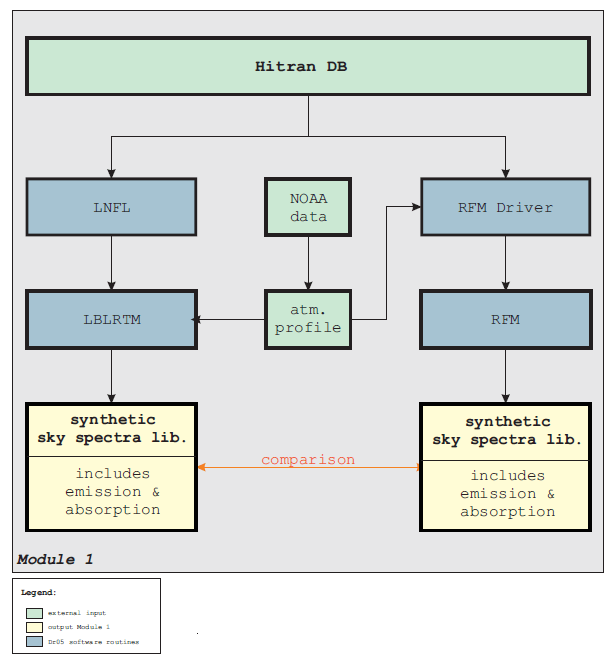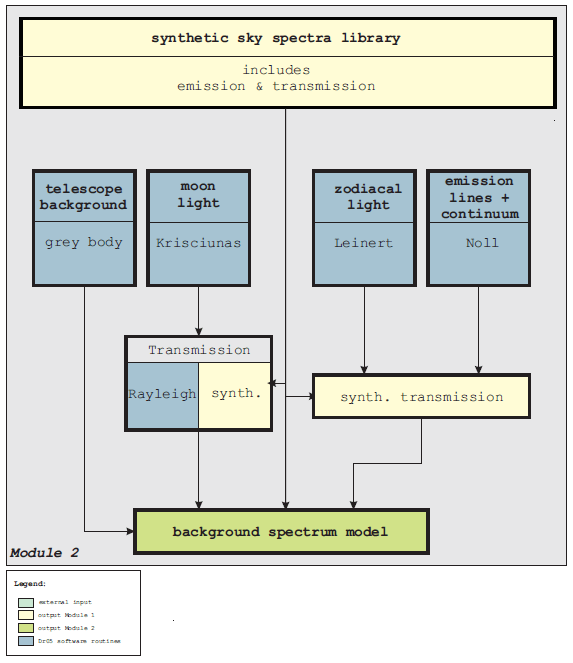|
Project DR05 is dedicated to the development of a new sky background model for present and future The Code is segmented to two individual modules. Module 1 only runs once if the theoretical input data chages. It creates a whole library of template spectra. The whole runtime is a few CPU hours. Module 2 is that part running each time (as a plug-in to the instrument specific ETCs) an observer queries an ETC. It calculates on the fly fast changing (but not CPU intensive) contributions like moon illumination, telescope emission etc. FOr the radiative transfer part it accesses the library data base and interpolates in the given parameter space. Module 1 creates a synthetic sky spectra library based on data from HITRAN and meteorological statistical information of the ESO sites. The HITRAN 2008 database (Version 13.0) gives spectral lines of up to 39 molecules and atoms. The meteorological data is taken from the Paranal Meteo-Monitor and is used Module 2 of the DR05 project aims at adding the background model components, which require only small amounts of computing time. Hence, these routines can be carried out during every single ETC call. These components are the scattered Moon and zodiacal light, the telescope emission, and the non-thermal atmospheric continuum and emission lines. All components are added to the spectrum selected from the library, which is best correlated to the user input selections. Module 2 is linked to Module 1 by re-using the molecular radiance and transmission spectra produced by the first component. The maximum wavelength range and resolution of the Module 2 output spectra depend on the corresponding values for the Module 1 library data. Wavelengths between 0.3 and 30 μm and a resolution of 3 − 4 × 105 are guaranteed. Here an example for the final model [Figure] is shown. The whole user documentation is given in the ESO document archive as Nr.: VLT-MAN-ESO-19550-5205 The SM01 project mostly already overcomes the DR05 project description - In particular, the model described in Noll et al. (2012) is fully implemented - find it as draft HERE. Preliminary interface to a calculator extending parameter space compared to the pure ETC is provided also ONLINE. Please cite / reference the scientific use and iform the team about such success stories.
|
 | ESO in-kind Projekt | |

Finanziert durch:  |
| © 2011-2014 Stefan Kimeswenger - Institute for Astro- and Particle Physics Innsbruck, Austria |

